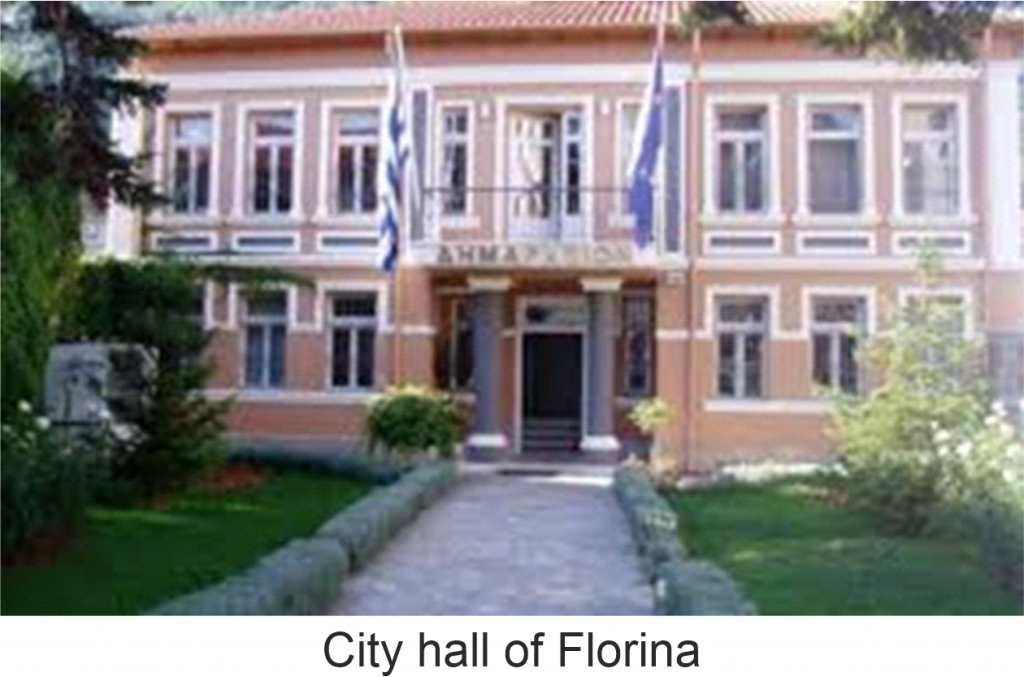
The Municipality of Florina is the largest municipality of the Regional Unit of Florina of the Region of Western Macedonia established in 2011 with the Kallikrates Program. It resulted from the union of the pre-existing municipalities of Florina, Kato Cleine, Perama and Melitis. The area of the new Municipality is 827.62 sq km and its population is 32,881 inhabitants, according to the 2011 census. The seat of the municipality is the city of Florina. In the municipal elections of May-June 2019, Vasilios Giannakis was elected as the new mayor of Florina.
The particularly rich natural landscape of the region as well as the efforts of important Florinians gave Florina the opportunity to develop through ecotourism programs, while highlighting local products.
It is considered a city of artists, featuring dozens of painters, sculptors, musicians, professionals and amateurs. The ski resort of Pisoderi is located in Vigla 24 km from the city of Florina. A remarkable chalet has been created and 10 slopes serve guests. It has the largest Olympic track in Greece.
Florina has many tourists in summer but even more in winter. In the summer there are many events throughout the Municipality by dances, clubs, painters, choirs and musicians.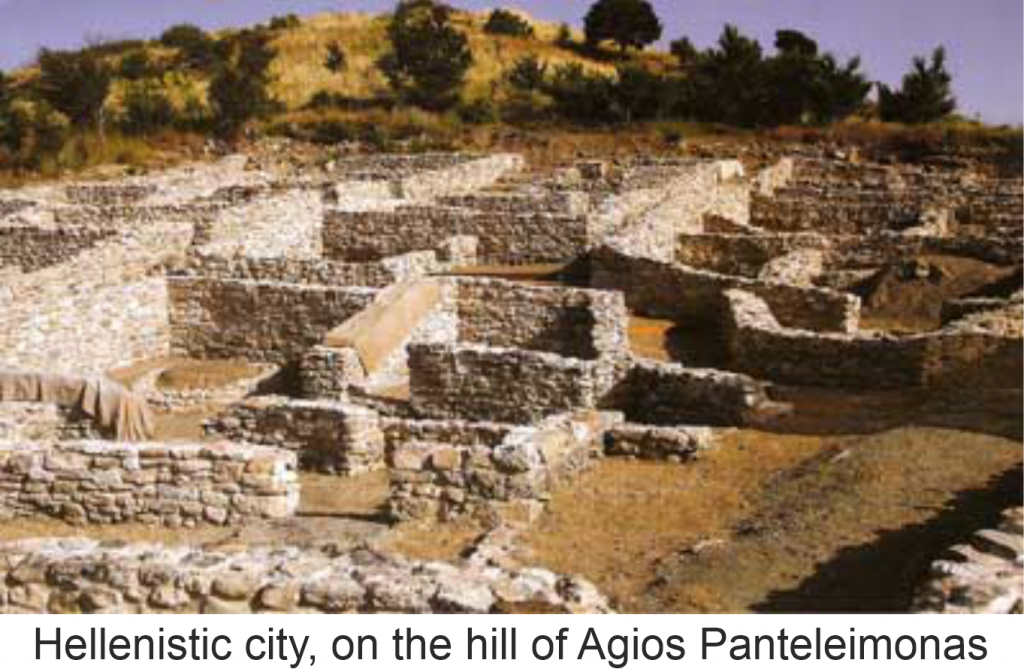 In the city there are the Archaeological Museum of Florina, the Museum of Contemporary Art, the Gallery of Florina’s Artists, the Public Library “Royal Pitoska” and the Folklore Museums of the Florina Culture Club and the educational Association “The Aristotelis”. Also in operation is the archaeological site of the Hellenistic city, on the hill of Agios Panteleimonas, while in mid-August 2016 the renovated Florina Zoo, which has been adorning the city since 1967, was opened.
In the city there are the Archaeological Museum of Florina, the Museum of Contemporary Art, the Gallery of Florina’s Artists, the Public Library “Royal Pitoska” and the Folklore Museums of the Florina Culture Club and the educational Association “The Aristotelis”. Also in operation is the archaeological site of the Hellenistic city, on the hill of Agios Panteleimonas, while in mid-August 2016 the renovated Florina Zoo, which has been adorning the city since 1967, was opened.
The crown of the cultural events of the city, but also of the surrounding villages, is the revival of the custom of lighting the Lights on the eve of Christmas. At midnight 23 to 24 December the residents light fires in dozens of neighborhoods and districts of the city, around which feasts and feasts with traditional dishes and in which all the residents participate, as well as many tourists who visit the city these days. The custom probably has its roots in pre-Christian pagan ceremonies, but nowadays it is inextricably intertwined with the fire lit by the shepherds in the newborn Christ.
History
The earliest human activity in Florina until this moment according to archaeological excavations is placed in the middle Neolithic Period (5800 – 5300 B.C., settlements of Armenian, Melitis, Agios Panteleimonas, Agioi Anargyri, Varikos).
In the bronze (3100 – 1050 B.C.) and Iron eras, habitation increased in the basins of Florina and Amyntaio.
Early Bronze Age: Ano Cleines, Purpose, Hills, Niki, Palaistra, Kladorachi, Pass, Ag. Bartholomew, Valtonera.
Late Bronze Age: Beech – Microlimni, Triangle, Florina, Papagianni, Neohori, Stones.
Iron Age: Stones, Eagle, Baric, Vegora, Limnochori, Gorge, Palaistra, Ag. Panteleimon).
The incomplete excavation data in Florina for the classical era are replaced by the information of historical sources (Herodotus I ́137, Thucydides 4, 124 – 128, Stravon 7.326, Diodoros Siciliotis 16.4) from which it is testified that in the second half of the 5th century. B.C. the area was ruled by the royal house of Lygistes, whose mythical roots were in Corinth.
Lygistida was named after the mythical hero Lygkea or by the bloodthirsty mammal Lygx – Lygos – Lynx. The Royal House of Lygistes had king The Arab, father of Princess Eurydice, who was the mother of Philip II King of Macedonia.
In 352 B.C. Philip II built Heraklia in Lygistida which would be a fortress against the Northern and Western enemies of Macedonia. M. Alexander was followed by many Florinians and many were leaders. The Lygistida class is famous, that is, the military team of the Lygistes.
In 148 B.C. Macedonia was subjugated to the Romans and Florina was subject to the 4th Toparchy and in 48 B.C. it was burned by the Romans during the Roman civil wars (Caesar – Pompey), by the Roman general Domitio, caesar’s friend.
During the Byzantine era the area belongs to the Eastern State along with all Greece and the Southern Balkan Peninsula and ecclesiastically to the Pope of Rome, until 731m. H., so Leo III the Isavros subjected her to the throne of Constantinople (Theofanis on 410.4)
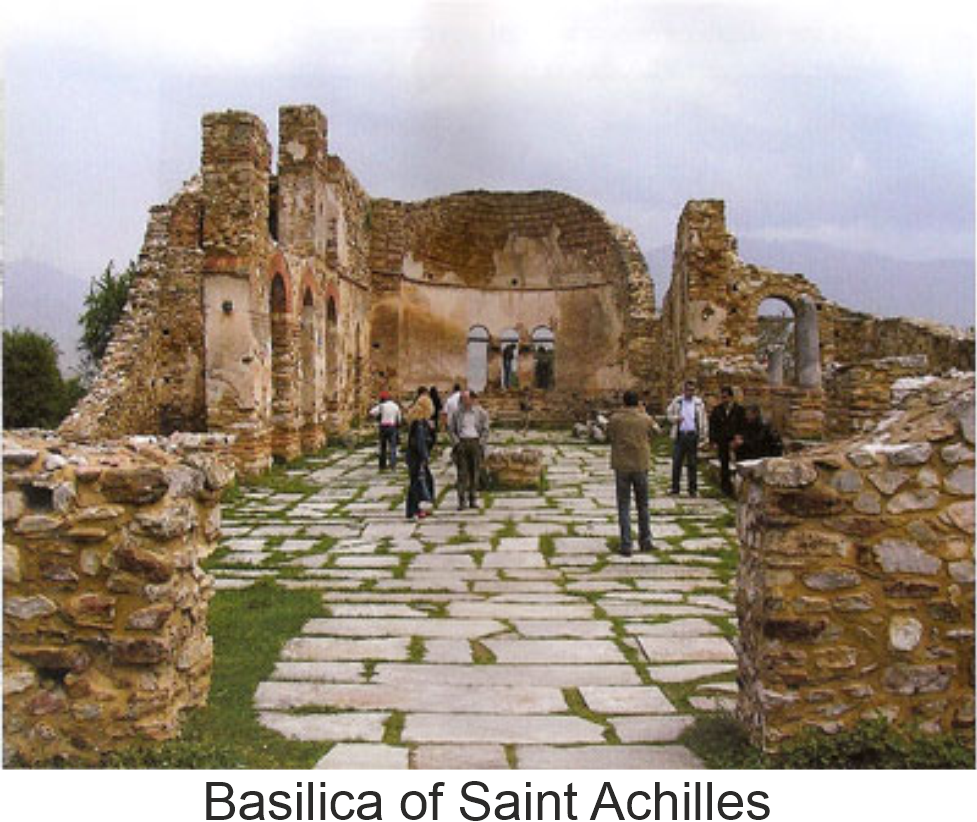
During the 10th A.D. there were fierce battles in the area between the Tsar of the Bulgarians Samuel and emperor Kingdom II of Macedonia, the excluded Bulgarian. Samuel founded a state with a capital, first Prespa and then Ahrida, carried out raids in Southern Greece and transported the sacred scene of Agios Achillios, in 980 A.D. from Larissa, to the homonymous island of the small lake of Prespa, to which it carried ten thousand Thessalonians, to cultivate the place, after its defeat in the Sperchios River, by the general of the Kingdom of Bulgaria. , Victorious Heaven.
In the 13th century Florina belongs to the Despotate of Arta, around 1204. In 1259 in the Empire of Nice, in 1331 – 1353 in the Serbs of Krali Stefanos Dusan. In 1371 Kralis Marcos, son of Dusan, and in 1385 Sultan Murat I conquered the area and began the period of Turkish rule until November 1912.
During the Turkish occupation Florina is mentioned more than 35 – 40 times in documents (firmania) of sultans, viziers and local authorities under the name Philorina or Florina, written in Turkish and Greek. At the end of the 17th century, apostle Kosmas Aitolos enters the area. In 1700 A.D. the first, in our history during the Turkish occupation, the armatolos Tsolakis or Meidanis, acts in the area. In 1822, rebel corps operated and occupied the straits of Arnissa and Bora.
Florina always had armatolikia, until 1821, in Key, Vei, Kelly, Pisoderi, Trivoun, etc. Florina also gave Friendly. In the main square of Florina, the Turks hung 9 pre-judges, in 1821. In 1867 it was founded in Florina New Friendly Society with the president of the Director of its schools preparing the revolution of 1978 which lasted 10 months.
In 1881 Captain Numis kidnapped Kaimakamis of Florina and the event became a legend and songs. In 1897, Captain Kottas, the first Macedonian, known as the “Eagle of the Korestes”, formed a rebel corps against the Turks and Bulgarians. In 1904 Comes Paul Melas and begins the final phase of the armed struggle.
On November 7, 1912, after 527 years of slavery, Florina was liberated by the Greek Army.
During the First World War, thousands of allied soldiers in Florina, of all races, doctrines and colors, launched their victorious attack on the Bulgarians and on 18 September 1916 occupied Florina, which for a month was occupied by the enemies.
In the Second World War, the first Victory of 1940 the allies saw and felt it on the front of Florina and especially in Prespa and Korestia. Light of hope was not only the containment of the Italians on the border line, but on November 1, 1940, the heroic 33 S.P. of Florina with its first counter-attack, occupied space more than 10 km, liberating many Albanian-occupied villages of Macedonia.
On April 6, 1941, however, the Germans invaded and then occupied the area. During the German occupation many villages were burned and many Florinians were executed by the Germans. On November 1, 1944, the Greek Army liberates Florina. Then the civil war broke out (1947 – 1949) where on February 12, 1949 became “The Battle of Florina” which was the beginning of the end of the civil war.
Florina today
The city with a population of 14,873 inhabitants and an area of 150,634 acres, is the capital of the homonymous Prefecture and is part of the Region of Western Macedonia.
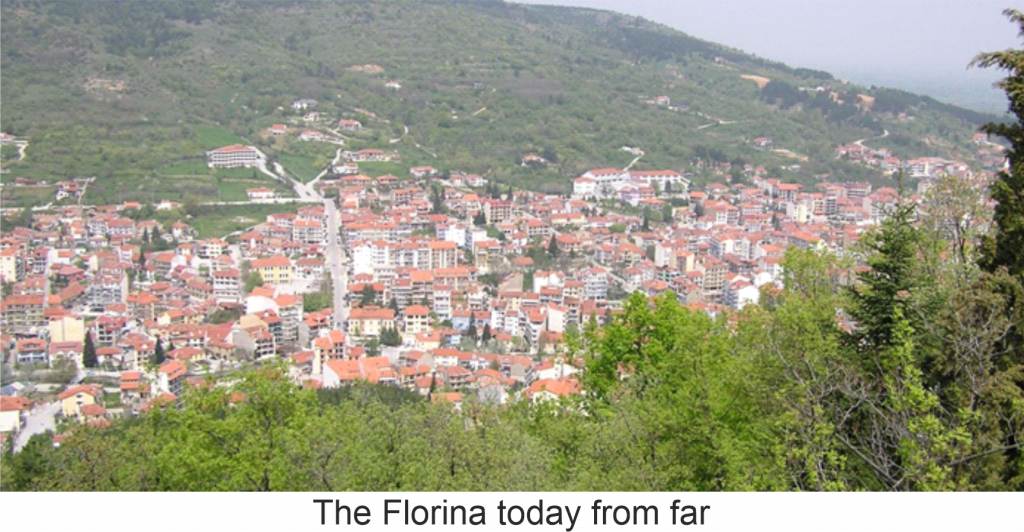
Florina is 159 km away. from Thessaloniki, 571 km. from Athens and is the northwest border of Greece. It borders three prefectures of Kozani, Pella and Kastoria and two states Albania and N.Macedonia, and is an economic center and commercial crossroads of the wider region. Florina is located at an altitude of 650 m and morphologically presents rich landscape variations, as it has a mountainous, semi-mountainous and lowland character. It is surrounded by large mountains, Voras (Kaimaktsalan) 2,524 m, Varnountas (Peristeri) 2,334 m, and Vernon (Vitsi) 2,128 m.
The climate is continental with cold winters, lots of rainfall and snowfall, as it is influenced by the geographical location of the city, altitude, large mountain volumes and the presence of lakes in the area. The average annual temperature is 12.1o C.
The area is mainly agricultural and livestock, while the main products produced are: cereals, beans, strawberries, apples, pears, peppers, tomatoes, grapes, etc. Meats and dairy products are also produced, while in the field of forest products timber and firewood.
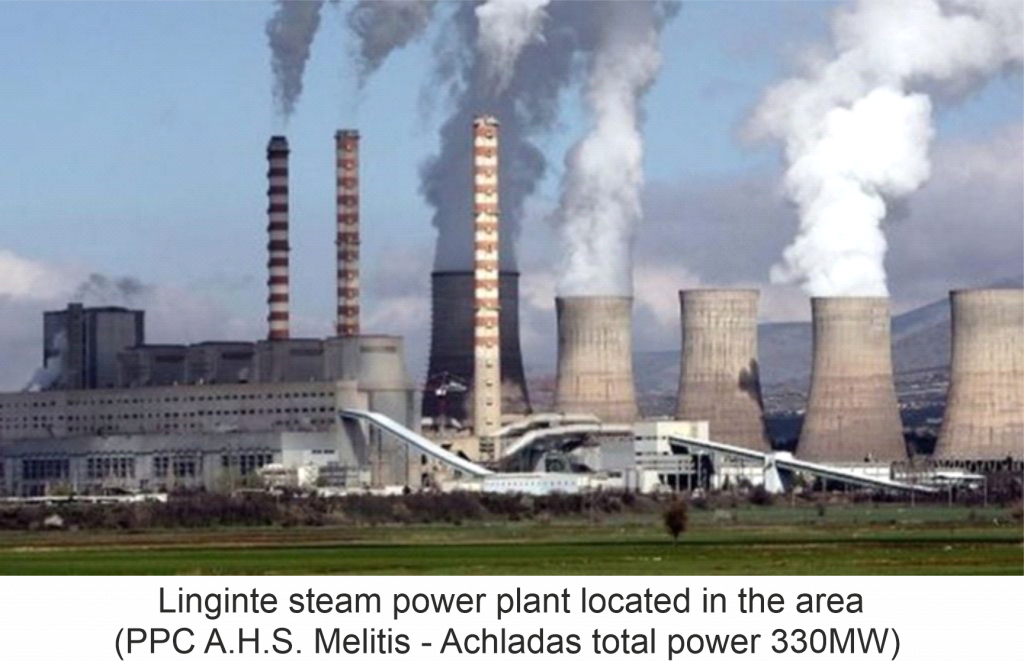
Due to the rich lignite deposits in the wider area, the steam power plant of PPC A.H.S. Melitis – Achladas with a total power of 330MW was built and operated. In 1986 the Florina Industrial Area began to operate, as in the wider region companies are active in the production, processing, trade, services and in particular in the food, beverage, soft drinks and natural carbonated water, furniture, wood, metal, construction, transport, etc.
An important role in the economy of the place are the commercial shops of the city providing a wealth of goods to the residents and visitors of the city. Florina’s most famous local products are red Florin peppers, traditional spoon sweets, Prespa beans and famous local wines.

The city in terms of architecture has to show characteristic examples of the past centuries, neoclassical and Macedonian architecture, influenced by elements of local culture, while many of its buildings date back to the time of the Turkish occupation.
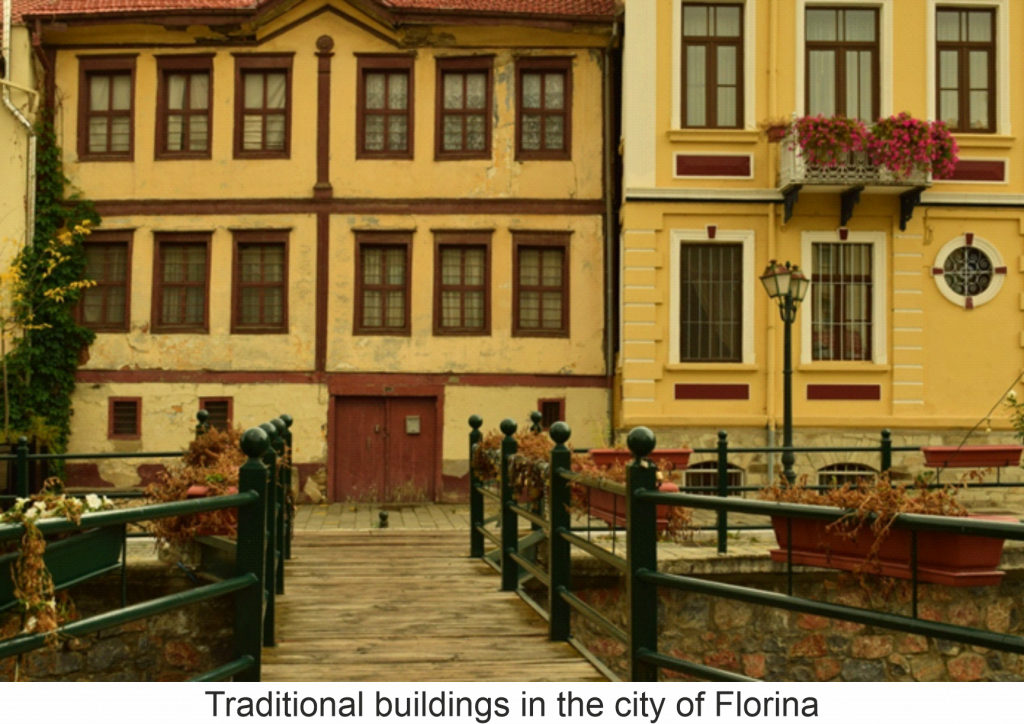
The neoclassical buildings, mansions of Florina, next to the banks of the river Sakouleva which crosses the city, impress visitors and are a source of inspiration for artists, painters, photographers and directors, as the enchanting landscape of the city formed the scene in 3 films by Theodoros Angelopoulos “Landscape in the fog”, “The Beekeeper” and “The meteor step of the stork”. Along the Sakuleva River there are workshops of local artists. Many are Florinian artists, whose works have become known not only in Greece, but also abroad, among them painters, sculptors, etc.
Culture, letters and the arts are an important part of the history of the place, as since 1941 the Pedagogical Academy operates, while today it is Pedagogical School of Teachers, Kindergarten and Department of Balkan Studies of the University of Athens.
In Florina there is also the Department of Visual and Applied Arts of the University of Western Macedonia, as well as the School of Agricultural Technology, an annex of the T.E.I. of Western Macedonia, with three sections a) animal production b) plant production and c) marketing and quality control of agricultural products. Also operates the Open University of the Municipality of Florina, which is now an institution in the local community, with a large number of participants.
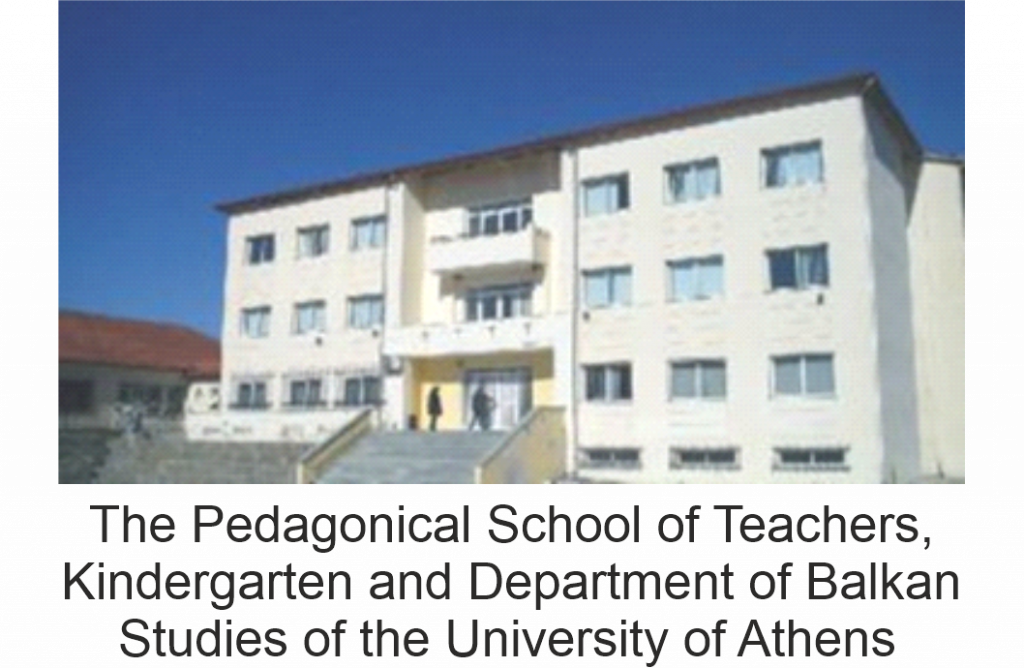
In the city there are also cultural associations with a long history such as the F.S.F. “Aristotelis” founded in 1941, the “Florina Artists’ House”, the “Florina Culture Club”, the “Society of Letters and Arts”, etc.
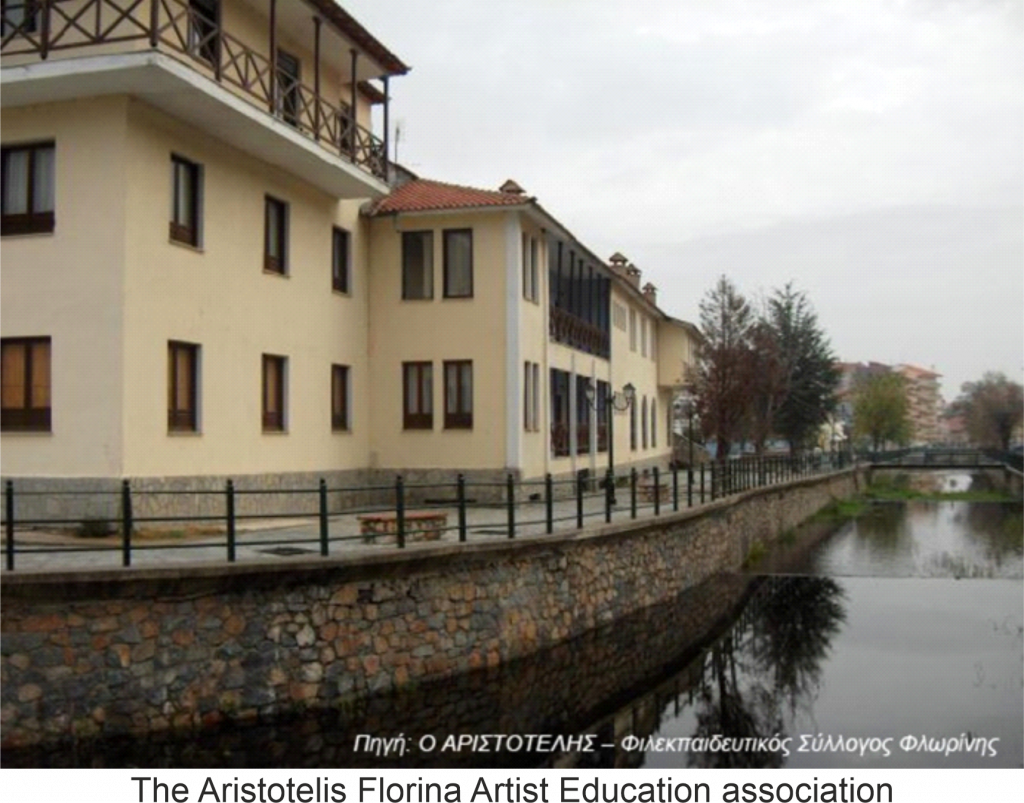
Florina has experienced significant distinctions in the field of sport, through the efforts of its athletes in a variety of sports, among them skiing, fencing of women’s football, etc., with national firsts and world distinctions.
Visitors can get to know the history of the place, through a tour of the archaeological site of the Hellenistic City of Florina as well as the museums of the city, the Archaeological and Byzantine which are co-located, the Folklore and the Museum of Contemporary Art. There is also the Florina Artists Gallery where one can admire works by Florinian artists.
A characteristic landscape of the city is the hill of Agios Panteleimonas, which is a favorite point of excursion of the walkers, as it has lush vegetation and enchanting routes through the forest, also giving a wonderful view to those who reach its peak. On the hill there are restaurants and refreshments, as well as the archaeological site where visitors can admire the Hellenistic City of Florina, which dates back to the 4th century BC.
At the top of the hill is the 30-metre-high Cross, which is illuminated by headlights at night and gives the observer the feeling of hovering in the sky.
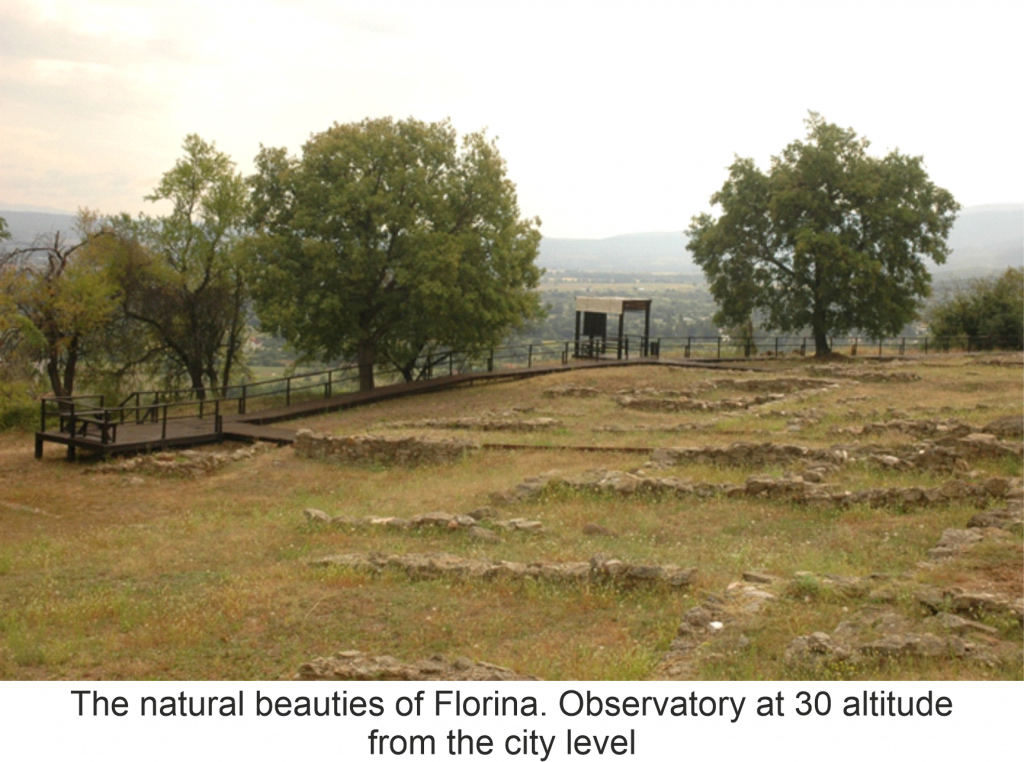
The natural beauties of Florina are an attraction for visitors. The mountains and the intense vegetation that surround it, the river and its neoclassical buildings, give the visitor’s eye a vast palette of colors, while each season gives a different look to the city, which even the best painter could not capture in his paintings. The seasons are strongly perceived in Florina and especially in winter, as there are very low temperatures and heavy snowfall.

The organized ski resort of Viglas – Pisoderiou is 19 km away from the city and is a favorite meeting point for snow and nature lovers, with visitors from all over the country. In the same direction and at a distance of 45 km. is located the Prespa National Park, one of the most famous tourist destinations in Greece, an area of excellent natural beauty and world famous for its rare flora and fauna.
The most important customs and events in Florina are the impressive Christmas Fires that light up every year on December 23rd at 12 midnight, in every neighborhood of the city, offering plenty of wine and bean, while local traditional bands accompany the dance of visitors and residents until the morning, making the whole city a company.

Also every year the first ten days of August is organized the Cultural August florina, with many cultural events including dance groups, musical evenings with a lot of singers, theatrical performances, exhibitions of paintings and books etc. The island of Agios Achillios in Prespes, has for years been the center of the events “Prespeia”, with important concerts attended by visitors from all over Greece. The “Prespeia” takes place every year in the last ten days of August.
Florina is a welcoming city with modern hotels and guesthouses providing all the comforts to guests. In the taverns of the region one can taste unforgettable taste and wonderful wines and Greek tsipouro. In the center of the city there are cafés, bars, clubs and entertainment centers with live music. In Florina the modern way of life alternates with the tranquility of the romance and landscape of the city creating an image of contrasts that enchants those who visit it.



This webpage has been produced with the financial assistance of the European Union. The contents of the webpage are the sole responsibility of University of Western Macedonia and can, in no way, be taken to reflect the views of the European Union, the participating countries or the Managing Authority


